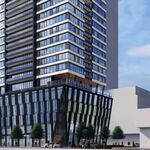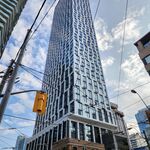littlewill1166
Active Member
All of those things you listed could have been required either way because the SRT would have to be shut down for a period of time to perform the upgrades. Yes, it's possible to run an on-street shuttle without priority and avoid those costs (which the TTC has already been doing for over a month).The unfunded busway is $60 million. But platform/terminal at the terminals, transit priority, and design is another $40 million. And that doesn't include the 57 extra buses they need - which would have cut this years bus purchase down by 57 vehicles ... which at the (most recent) cost of $1.7 million a bus adds another 98 million to the cost. And there won't be much left of those buses, with bustitution likely going for at least 8 years.
Nonetheless if you add up your numbers and cost escalate the $170 million vehicle cost in the 2006 report to account for inflation with a 3x multiple, the bus replacement would still be less expensive. I will agree that it's less expensive than a Subway or an LRT conversion however.
Ignoring other factors (extra operating costs, bus mid-life replacement, and that the extra 2006 cost for the then unnecessary Ellesmere tunnel upgrades, Kennedy loop replacement, station extensions, and wayside/yard modifications), I still think it would have been cheaper (or at least as cheap) to have issued a tender for shorter vehicles; two decades ago. If Vancouver can do open tenders for Skytrain rolling stock, so could have TTC.
If you go back far enough, the right choice would have been to build the LRT in the 1980s as originally planned instead of the SRT.
If the TTC had decided to replace the SRT vehicles. They would likely still have the same issues travelling through snow as the ones we have today (and as they do in Vancouver).
According to Steve Munro this is because snow on the reaction rails gets melted when a train passes over, the water freezes forming ice. The ice layers build up and cut off contact between the train and the reaction rail causing the train to stop. You could switch to conventional propulsion. However, the steep grades at Kennedy station would likely result in wheel slip issues (also faced by the existing system thanks to its small wheels).




